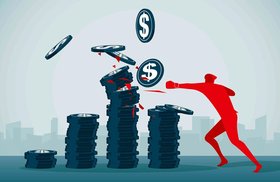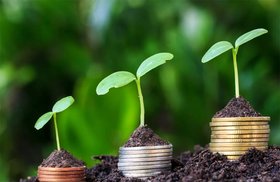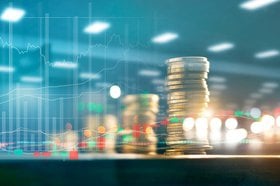Why smart investors put their money in wine during bear markets
Further reading
- What is the best investment between wine and stocks? Find out in this Investing in Stocks vs Investing in Wine guide.
- And if you decide to put your money into fine wine, here’s everything you need to know about Investing in Wine.
How do you fight inflation in market downturns?

How wine has shown throughout history, it can be a safe haven for your portfolio during a recession!
Inflation is at a 41-year high, many of the world’s leading economies are on the brink of their next recession — if that’s not the case already — and the S&P 500 has dipped from its recent peaks pushing us into a bear market.
That sentence is depressing even though it's reality.
But it’s not all doom and gloom. While terms like recession, inflation, and bear market elicit negative feelings, they present financial opportunities if you know where to look.
Smart investors are always searching for the silver lining and finding ways to make their money work for them rather than the other way around.
When you were on the hunt for recession-resistant, inflation-fighting assets to diversify into, you found fine wine ticked all the boxes.
But… how well will fine wine stand up to the current economic downturn?
To figure that out, it’s important to look at historical data to help gauge the profitability of this unique investment.
Fine Wine: How Well Does It Perform in Market Downturns?
Fine Wine vs. The Great Recession of 2008
In 2008, the US housing bubble burst, leading to a global financial crisis that some have not fully recovered from to this day.
In the preceding months, signs started to show that things were headed in the wrong direction — easy credit, ultra-low interest rates, and toxic subprime mortgages. Then, from 2007-2009, the S&P 500 dropped an alarming 49.17%.
Most surprisingly, stocks dropped by an average of 52% that year. And on Sept. 17, 2008, the US economy almost entirely bottomed out with investors deciding to (somehow collectively) withdraw $144.5 billion from money market accounts.
The stress in the air at the time was palpable. (You probably remember). In just three years, the market was in the worst shape it had been in since the Great Depression.
But what about fine wine investments?
From November 2007 through June 2010, a fine wine index called the Liv-ex Fine Wine 1000 increased by 25.2%.
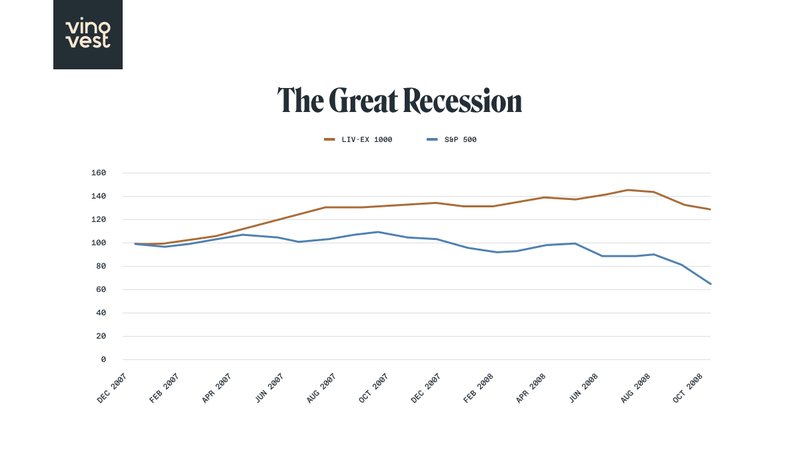
While the world’s main financial institutions were in financial freefall, the money invested in the wines on the Liv-ex Fine Wine 1000 grew in value, effectively warding off the recession surrounding it.
To put that plainly: fine wine fought the worst recession of our time and won.
The nature of wine – how it’s made and consumed – was largely unaffected by the underlying causes of this recession. In favorable and troublesome seasons (perhaps even more so during the latter), wine consumption does very well and did just so during the Great Recession.
This isn’t the only instance where wine has triumphed during hard times.
Fine Wine vs. Other Recessions
During the Dot-Com crash from 2000-2002, the S&P 500 hit investors really hard, dropping as much as -41.5%.
Wine on the Liv-Ex Fine Wine 50 (Liv-ex’s only fine wine index at this time), on the other hand, had already appreciated 17% in that same span.
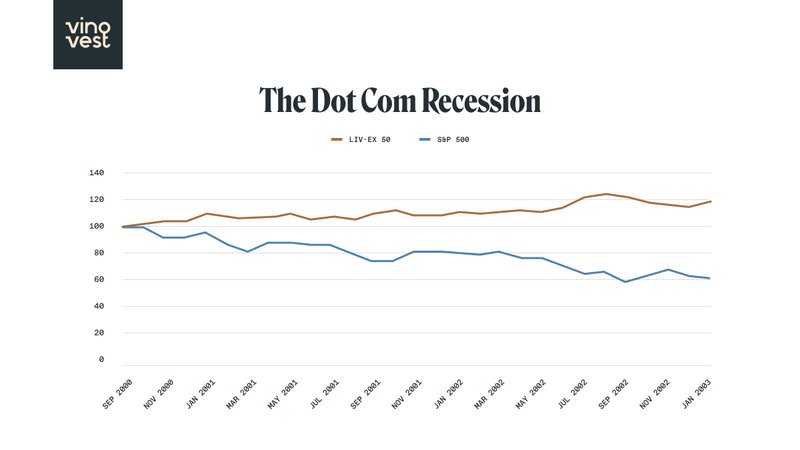
You can find similar results during the first quarter of 2020 when Covid-19 put the global economy at a standstill. Every major market index dropped double-digits, with the S&P 500 alone falling 19.6%.
Meanwhile, fine wine barely budged, with the Liv-ex Fine Wine 1000 dipping a meager 4.0%.
Over and over, we see that wine investments have a very low correlation with traditional markets. (A 0.12 correlation, to be exact.) Plus, fine wine is not susceptible to the same volatility that we’ve seen wreak havoc across equities.
Fine Wine and Bear Markets

So, here’s the million-dollar question: why does fine wine thrive no matter what the global economy is doing?
Supply and demand are two reasons. Fine wine is made in very small batches compared to what you can buy at your local grocery store. (Only 1% of all wine is investment-worthy.) From the get-go, the supply of these investible wines is highly limited.
Several factors drive demand, including brand equity, critics’ scores, and fine wine’s ever-improving quality. Additionally, every time someone opens a bottle, the global supply is decreased. With one less bottle in circulation, demand inches ever higher.
Typically, the buyers of these expensive wines tend to be ultra-wealthy and less affected by market downturns than the average investors. They can afford to spend $558,000 on a single bottle of 1945 Domaine de la Romanee-Conti.
The desire we humans have for an artfully crafted cup of vino has been an age-old obsession harkening back to the biblical era. That passion still remains in many of us.
And today, you can continue to capitalize on this with an asset that’s proven time and again to be recession-resistant.
Wine Investing: A Surprising Antidote to the Sting of a Bear Market
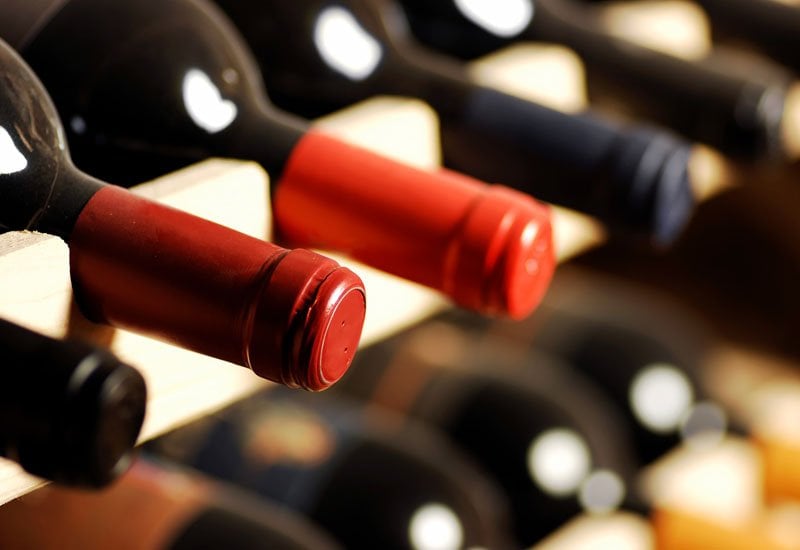
The bulls have had a good run in the market, but today, dips and volatility of stocks show that we’re in a bear market that’s taking some big bites out of people’s bottom lines.
Panic at this point is inevitable, and many will no doubt scramble to get their money out and into a safe place. But smart investors aren’t panicking. They’re pivoting and diversifying, reallocating their funds into places that grow their money over time, even in a bear market. They’re putting their money into fine wine.

